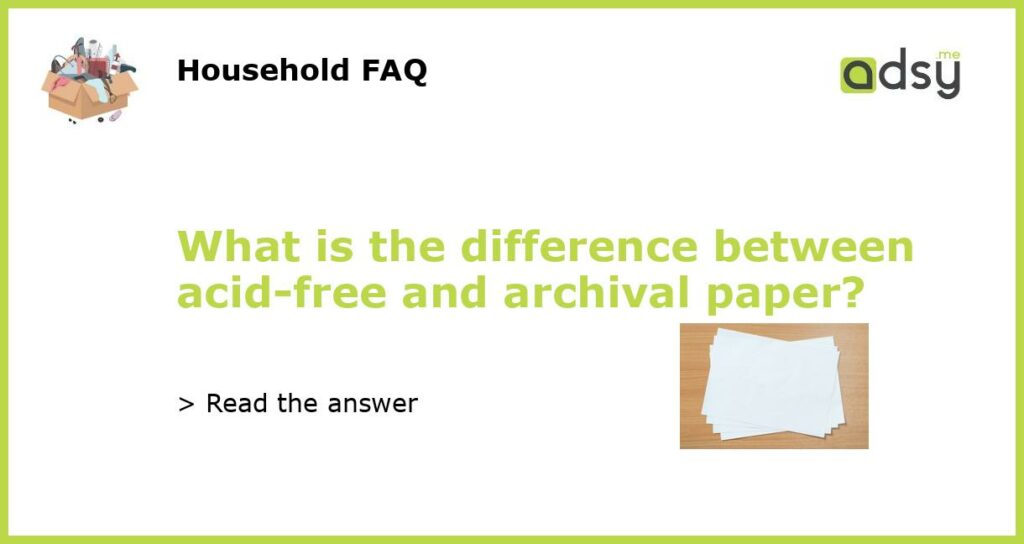What is the difference between acid-free and archival paper?
Acid-free and archival paper are both commonly used terms in the world of paper and printing. While they are often used interchangeably, there are subtle differences between the two. In this article, we will explore these differences and help you understand the importance of using acid-free and archival paper for preserving and protecting your documents, photos, and prints.
Acid-free paper
Acid-free paper is paper that has a neutral or alkaline pH level, typically around 7 or above. It is made using a chemical process that removes lignin, a substance found in wood pulp that naturally contains acid. This acid-free process helps prevent the deterioration and discoloration of paper over time. Acid-free paper is commonly used in art and design, printing and publishing, and preservation of important documents and photographs.
Archival paper
Archival paper, on the other hand, refers to paper that meets certain standards of longevity and durability. While acid-free paper is part of the criteria for archival paper, there are additional requirements that need to be met. Archival paper needs to be made from high-quality materials, be resistant to decay, have a high lignin content (less than 1%), and be buffered with calcium carbonate or magnesium carbonate to further neutralize acids.
Preservation and longevity
The primary goal of both acid-free and archival paper is to ensure the preservation and longevity of documents, photos, and prints. By using acid-free and archival paper, you can greatly reduce the risk of degradation and deterioration over time. Acidic paper, on the other hand, can deteriorate and become brittle, yellow, and prone to fading. This is particularly important for archival purposes, as the documents or photos being preserved may hold historical, cultural, or sentimental value.
Uses and applications
Acid-free paper is commonly used in various industries and applications. Artists and designers prefer acid-free paper for their artwork and prints, as it ensures the longevity and preservation of their creations. Publishers and printers use acid-free paper for books, magazines, and other printed materials that need to last for a long time. Acid-free paper is also essential for preserving important documents such as birth certificates, marriage certificates, and legal papers.
Archival paper, with its higher standards of longevity and durability, is particularly used in the archival and preservation field. This includes libraries, museums, and archives that need to preserve and protect valuable historical documents, manuscripts, rare books, and photographs. Archival paper is designed to withstand the test of time and provide the best possible protection against degradation.
Conclusion
While acid-free and archival paper are often used interchangeably, there are distinctions between the two. Acid-free paper is paper with a neutral or alkaline pH level, while archival paper is a subset of acid-free paper that meets additional standards of longevity and durability. Both types of paper are essential for preserving and protecting important documents, photos, and prints. Whether you are an artist, publisher, or archivist, using acid-free or archival paper ensures that your work or historical artifacts will be well-preserved for future generations to enjoy.






